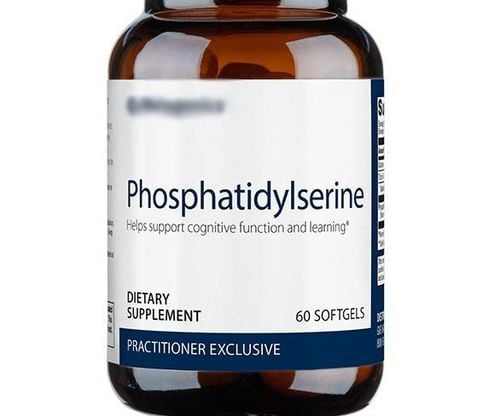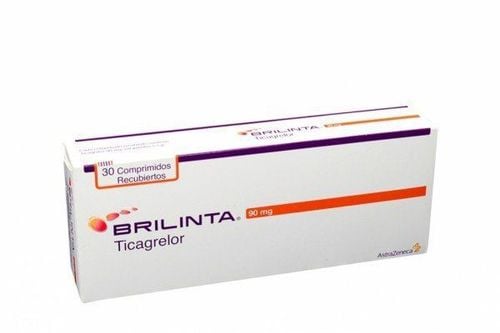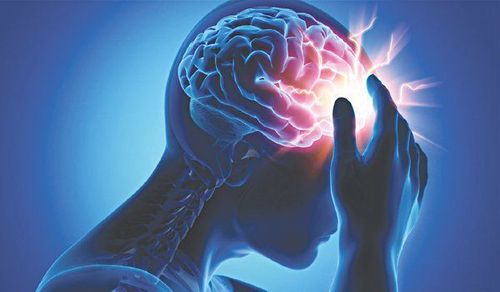This is an automatically translated article.
According to statistics, more than 1⁄2 of stroke cases occur outside of medical facilities. Therefore, recognizing the warning symptoms of a stroke will contribute to minimizing the severe effects on the patient's health. What are the warning signs of a stroke?
1. Transient ischemic attack is a warning sign of stroke Transient ischemic attack (also known as TIA) in the recent concept is no longer just a transient phenomenon or the patient has may not be concerned. Transient ischemia warns the patient that these may be signs of a stroke or may be treated as a minor stroke.
Symptoms of a transient ischemic attack are similar to the initial signs of an ischemic stroke. The only difference is the duration of the symptoms. The symptoms of a TIA are transient, leaving no sequelae, almost disappearing in about 10 to 20 minutes, and not lasting more than 1 hour at most.
The early signs of ischemic stroke include:
Numbness, weakness or paralysis of the limbs on one side of the body, sometimes the patient only feels heavy; Paralysis on one side of the face, distorted mouth; Changes in perception such as lethargy, lethargy or even coma; Changes in gait, loss of synchronization and coordination of movements; Voice disturbance, slurred speech, difficulty speaking or, worse, inability to speak; Dizziness, lightheadedness, lightheadedness or possibly fainting; In some cases, there may be a mild headache; Memory disorders, transient forgetfulness; Convulsions. However, not all patients present with typical symptoms of a stroke. Many patients go to the hospital and talk to their doctor about how they are talking normally but suddenly stuck their tongue or called the wrong names of loved ones around. Although numbness in the limbs is a very typical sign of a cerebral infarction, sometimes patients do not realize it, they just feel the same signs as eating rice, suddenly dropping their chopsticks or bowl or normal handwriting. He became scribbled again, wrote very badly, and could not control his hand movements. This could be a warning sign of a stroke or a sign of a transient ischemic attack.
In addition, some people experience frequent dizziness and lightheadedness and consider them normal. Some patients report sudden darkening of the eyes, describing it as being in a room with a sudden power outage and quickly returning to normal. This phenomenon is also considered a warning symptom of a stroke and the sufferer needs special attention. In particular, people with a history of hypertension, diabetes or dyslipidemia and having many of the above symptoms at the same time need special attention because the risk of stroke is very high.
Watch now: Stroke - signs to go to the hospital right away

Dấu hiệu đột quỵ trước 30 ngày được nhiều người quan tâm
2. How to deal with a stroke? Stroke cases when entering the hospital will be diagnosed by doctors through the process of questioning, clinical examination and most importantly, imaging results. In particular, the results of computed tomography (CT) and magnetic resonance imaging (MRI) of the brain will accurately diagnose whether there is a cerebral stroke or not and whether the stroke is in the form of an ischemic or hemorrhagic stroke. At the same time, the doctor will assign other laboratory tests to assess the extent, find co-morbidities and provide an appropriate treatment regimen.
In case the patient has an ischemic stroke, that is, the blood vessels in the brain are blocked, the doctor may prescribe drugs to dissolve the blood clot or intervene to remove the thrombus. However, this measure is only considered when the time from the first signs of stroke to being taken to the hospital is within 4.5 hours. This time is called the golden time in treatment, when the brain is reperfused, the brain cells have not yet completely died and the disease symptoms can be restored. If beyond this time, the possibility of stroke recovery is almost no longer. Therefore, in ischemic stroke, time is the biggest determinant of the degree of recovery. If we were just 1 minute faster, 2 million neurons of the patient would be protected.
Ischemic stroke cannot be prevented or completely controlled, because this disease is also related to many other factors such as lifestyle (alcohol use, smoking), medical history (dyslipidemia, dyslipidemia, etc.) high blood pressure, diabetes...), old age (people over 50 years old with cerebral blood vessels enter the aging stage). At the same time, this disease often leaves many serious sequelae, even death, and if you are lucky enough to survive, the treatment costs are also very high. Therefore, if we recognize the signs of stroke 30 days before and find supportive measures, we can completely cope with this disease.
Watch now: Be cautious if you have ever had signs of a transient ischemic attack

Xây dựng chế độ ăn uống lành mạnh, bổ sung thêm nhiều rau xanh để phòng bệnh đột quỵ
3. Some measures to prevent stroke Besides being alert to the warning symptoms of a stroke, we need to apply the following measures to minimize the possibility of a stroke:
Control stabilize blood pressure, especially in people with long-standing hypertension. High blood pressure is both a cause of cerebral blood vessel rupture causing cerebral hemorrhagic stroke and a predisposing factor leading to cerebral infarction; Stable blood sugar control: Diabetes contributes to the formation of atherosclerotic plaques, including cerebral arteries, and leads to blockages, causing cerebral infarction. Therefore, if blood sugar is controlled at a stable level, the chance of stroke will also be low; Control blood fat, blood cholesterol; Quit smoking habit: Smoking is one of the main causes of stroke or cerebrovascular accident and many other diseases. Therefore, people with this bad habit should find ways to give up to protect their health and reduce the risk of stroke; Build a healthy diet, add more green vegetables, limit salt, sweet and fatty foods; Develop an exercise regime, regularly exercise for physical training; Control weight, stabilize body weight, limit overweight and obesity; Periodic health check to detect abnormalities early and take early treatment measures. Transient ischemic attack is a high risk factor for ischemic stroke. Therefore, be cautious if you have ever had signs of a transient ischemic attack to avoid dangerous complications from a stroke.
To screen for a stroke after the appearance of signs of a transient ischemic attack, Vinmec doctors may prescribe a brain MRI without magnetic contrast injection, with a 3D MRA TOF pulse sequence, supplemented with a pulse sequence. Axial T2W and or axial FLAIR in 7 minutes, helps to detect brain aneurysms, cerebral arteriovenous malformations, dural arteriovenous fistulas, cerebral artery stenosis and some abnormalities in demand brain tissue. When there is an abnormality on the cerebral blood vessels, the doctor will prescribe a magnetic contrast pump to investigate more cerebral vascular imaging (MRA). From there, there is an accurate assessment of the shape and size of the abnormality to give appropriate treatment indications.
The 3.0 Tesla MRI system at Vinmec hospitals across the country is equipped with state-of-the-art equipment by GE Healthcare (USA) with high image quality, allowing for a comprehensive assessment, not missing the damage but reducing the damage. shooting time. Silent technology helps to reduce noise, create comfort and reduce stress for customers during shooting, resulting in better image quality and shorter shooting time.
Please dial HOTLINE for more information or register for an appointment HERE. Download MyVinmec app to make appointments faster and to manage your bookings easily.













